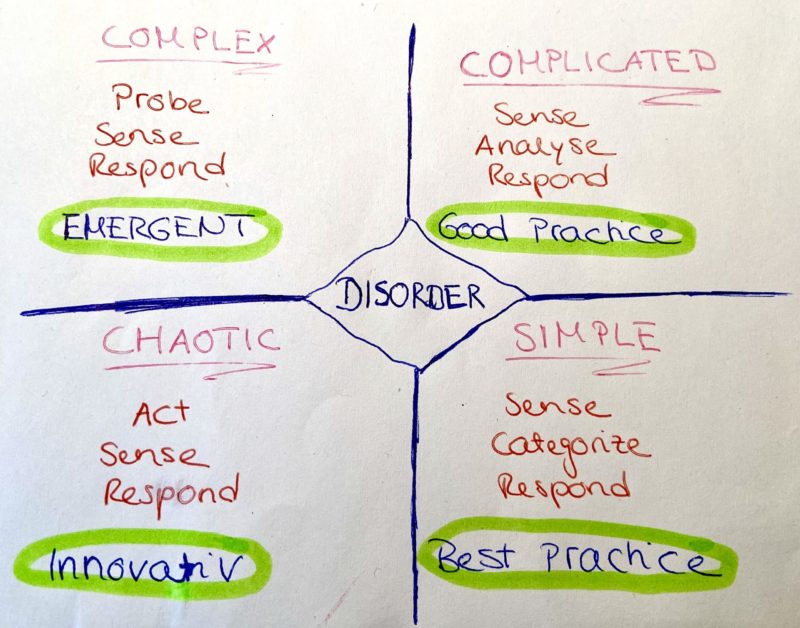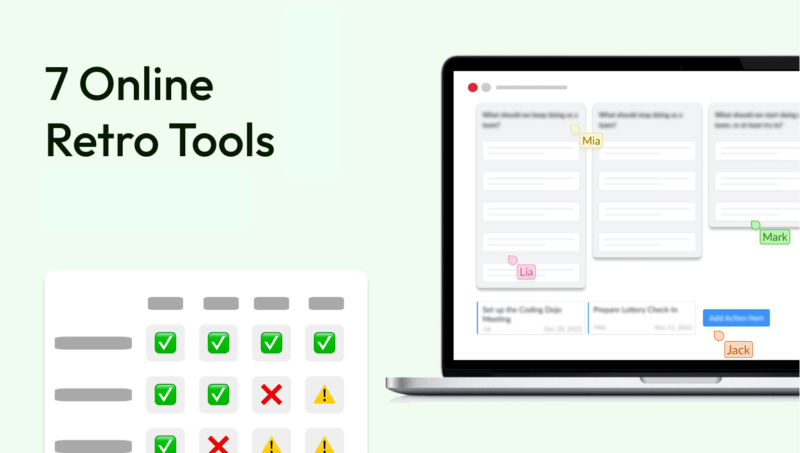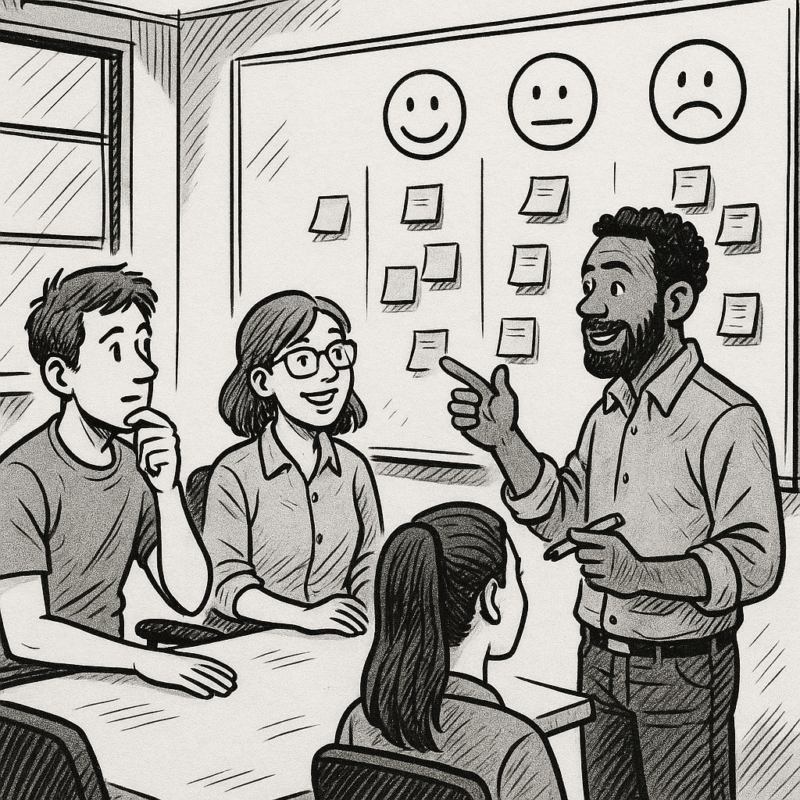First of all: Do you want to develop your team or company in measurable and fun ways? Here you can try out software tool for agile team development completely for free:
VUCA world here and VUCA world there. The term is currently on everyone's lips and is more or less revolutionizing the world of work. But what is VUCA and where does the term come from?
VUCA is an acronym, which for Volatility, Uncertainty, Complexity and Ambiguity stands. It originally dates from the Cold War era and was used for the first time by the U.S. Army War College for the collapse of the USSR in the early 1990s. After the collapse of the socialist system, there was suddenly no longer just one enemy, but many different and unpredictable enemy powers. In the argot of the American military, the term describes the circumstances of the new war. Suddenly, new perspectives and strategies were needed to assert oneself.
But before you think that we have history classes, let's take a look back at the world of work: what do theaters of war have to do with today's VUCA world of work?
VUCA working world
VUCA is a current and modern term. However, it is not always entirely transparent what consequences this has for our working life.
The definition and examples in the work context look like this:
- Volatility: The world we are in is becoming increasingly unstable and changes are more unpredictable. Example: extremes are becoming more common & #8211; the financial crisis of 2008 wasn't there before.
- Uncertainty: Planning is less and less possible because forecasts are less and less valid due to constant changes. It is therefore becoming increasingly difficult to rely on experience. Example: Artificial Intelligence, Blockchain & #8211; What new technologies are being developed that can replace traditional markets?
- Complexity: Our world is becoming increasingly complex and cause and effect chains are becoming more and more opaque. Example: Replacing the phone market with Whatsapp is both unpredictable and complex.
- Ambiguity: “One size fits all” approaches are becoming less and less applicable because there is no longer any clear right or wrong. Instead, facts have to be viewed as a continuum. Example: Does artificial intelligence create jobs or replace them?
Fortunately, we don't have to secure our chances of survival in war. For this, methods have to be found and applied, with which companies can move safely in the complex VUCA working world and thus assert themselves.
Which manners and work styles are appropriate is not always clear. But one thing is certain: The complexity and contradictory nature of the VUCA world requires us to be flexible, iterative methods and frameworks, such as those known from agility as agile methods.
When we need to know about VUCA
In order to understand in which situations response strategies in the sense of the VUCA world are necessary, it is helpful to use the Cynefin Framework by David J. Snowden (Snowden, Boone, 2007) to watch.
The Cynefin Framework is used to set up a typology of contexts. This helps to typify the variety of situations in which decisions are necessary.
According to the Cynefin Framework, there are five domains according to which decision-making situations can be structured:

Of course, there are also simple situations in the VUCA working world, to which we can react as usual with our proven practices. In addition, there are also more and more complex to chaotic situations that we do not have enough experience and knowledge. So we have no best practices, which is why agility is important. In some cases, it is not even possible to open up the background because the situations are so complex that there is no uniform knowledge about them.
Understand the Cynefin Framework in a playful way
To make the Cynefin Framework and the meaning behind it a little more tangible, let's look at the four dimensions Simple, Complicated, Complex and Chaotic based on a Lego game.
First a diagram is recorded, which to the end the game should look something like this:

In the beginning you draw only the diagram on and it will then be filled during the game.
To play you need tables for groups of 3-4 people each, approx. 200 Lego bricks in 6-10 different colors and sizes and approx. 10% special bricks such as flowers, wheels or the like.
And this is how it works: There is a game for each domain of the Cynefin Framework, which you explain in advance until there are no more questions. The time is stopped, but no time frame is specified. Overall, the game shouldn't last longer than Last 60 minutes. After each task, players should be given 2 minutes to reflect on their behavior.
The rules of the game (for a VUCA working environment)
- Simple: Sort the pieces by color and make a pile for “special” pieces. Decides independently in the team which stones are considered “special”.
→ Common “best practices” usually arise in the respective groups in this task.
- complicated: Build a structure as soon as possible according to the following rules:
– At least 20 tiles high
– regular color pattern
– Each new block that is added must be smaller than the previous one
→ In this task there are usually different approaches per group: There is no “best practice”, but there are many “good practices”
- Complex: Decide to build either an animal or a vehicle in 30 seconds. As in the second exercise, a regular color sample must be created. Each color of the stones may only be touched by one person from the team. It cannot be spoken. The tables have to be changed every minute, taking the unfinished work with you. But you can't take the material with you.
→ You should notice a striking behavior here: Although it is only a game, many people do not get involved in discussions due to the communication ban. Instead, practices are tried out and new ideas emerge over time.
- Chaotic: The task is similar to the previous one, but now a plant or building must be built. At random times, the captain touches a team member's shoulder and shows another table. The person then immediately joins another team.
→ Communication is usually completely abandoned after a certain time. They prefer to simply try it out and may be stopped by others. This exercise often leads to demotivation and frustration.
A VUCA example: AI & ChatGPT 🤖
Human activities that require finesse cannot be replaced by AI, right? Well, maybe not replaced (for now). But AI can certainly be of help in these activities.
We have open AI's ChatPGT about Agile Coaching questioned and the answers are... not bad. Even a human agile coach probably couldn't have answered some of the questions better. 🦾
In many areas (autonomous driving, development of medicines, etc.), AI will change industries in the next few years – without this development being foreseeable. #VUCA
Recognize the cynefin dimensions in behavior
The simple exercise usually gets a quick and easy solution. One player suggests something and the others follow.
The complicated exercise requires a bit of planning, usually everyone suggests something, a quick decision is made and the process is adjusted as necessary during construction.
The complex exercise doesn't get better with increasing planning. The right process arises and is continuously adapted. The earlier the teams start building, the more comfortable they will be. It helps if all team members know what the animal / vehicle they want to build actually looks like.
The chaotic exercise leads to quite surprising and not always good solutions. Players often feel uncomfortable and the solution takes longer than before.
You call it VUCA working world? We say: VUCA!
In practice, you don't deal with Lego games every day, but the different requirements of the game levels contribute to understanding. They are also transferable to realistic situations.
As unsatisfactory as that may seem, there is no secret recipe for how to deal with the various requirements. In most cases, there is no best practice or silver bullet.
Sounds disappointing at first, doesn't it?
So that you do not get on the wrong track, we will of course give you a solution. Despite everything, you can act successfully and safely in the VUCA world. Namely with VUCA!
The answer to VUCA is VUCA. The survival strategy in the VUCA working world is also derived from the acronym:
- Vision → There must be a living, overarching vision for everyone involved.
- Understanding → Every employee must understand the vision and his / her personal mission.
- Clarity → Understandable and clear Communication: is very important. So that all conversation partners can (can) be successfully involved.
- Agility → The methods must be flexible and agile and must not be restrictive.
Taking all of these aspects into account will help you to move safely and competently in the field of war called VUCA world. You can find out exactly what agility is and how you can establish it in our article on Agile vs. Waterfall method read.
Echometer in the VUCA world of work
In order to be successful in such a world, regular team retrospectives are an important tool. These are part of the agility and serve to reflect and optimize the work processes. With our Tool for agile work we can help you develop an agile mindset. You can also anchor agility in the form of agile values in practice, so that you can easily find your way around the VUCA world. So if you want to arm yourself inexpensively against the VUCA world & #8211; have a look our tool right now.
References
Snowden, DJ, & Boone, ME (2007). A leader & #8217; s framework for decision making. Harvard business review, 85(11), 68.
https://www.agile42.com/en/training/cynefin-lego-game/
https://www.smaec.ch/2018/10/05/die-antwort-auf-vuca-ist-vuca/








